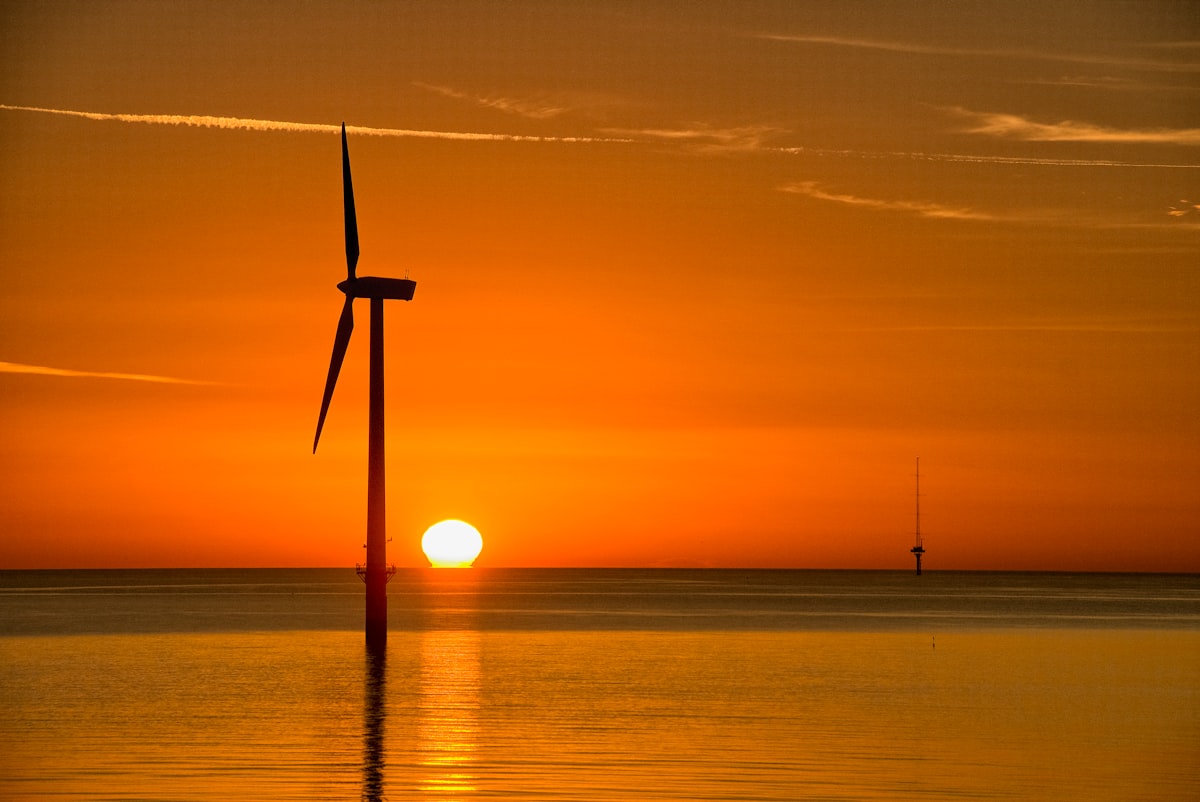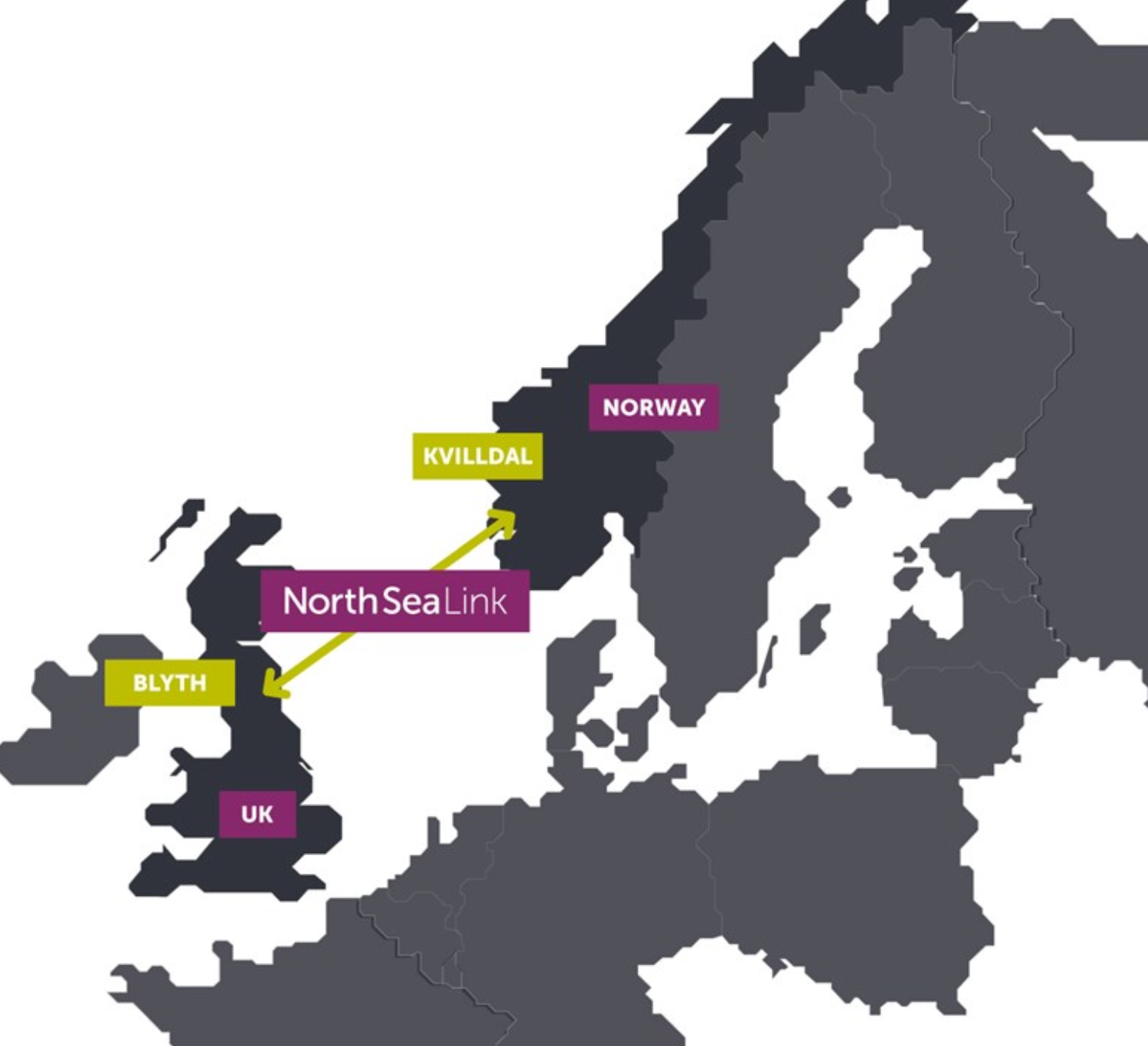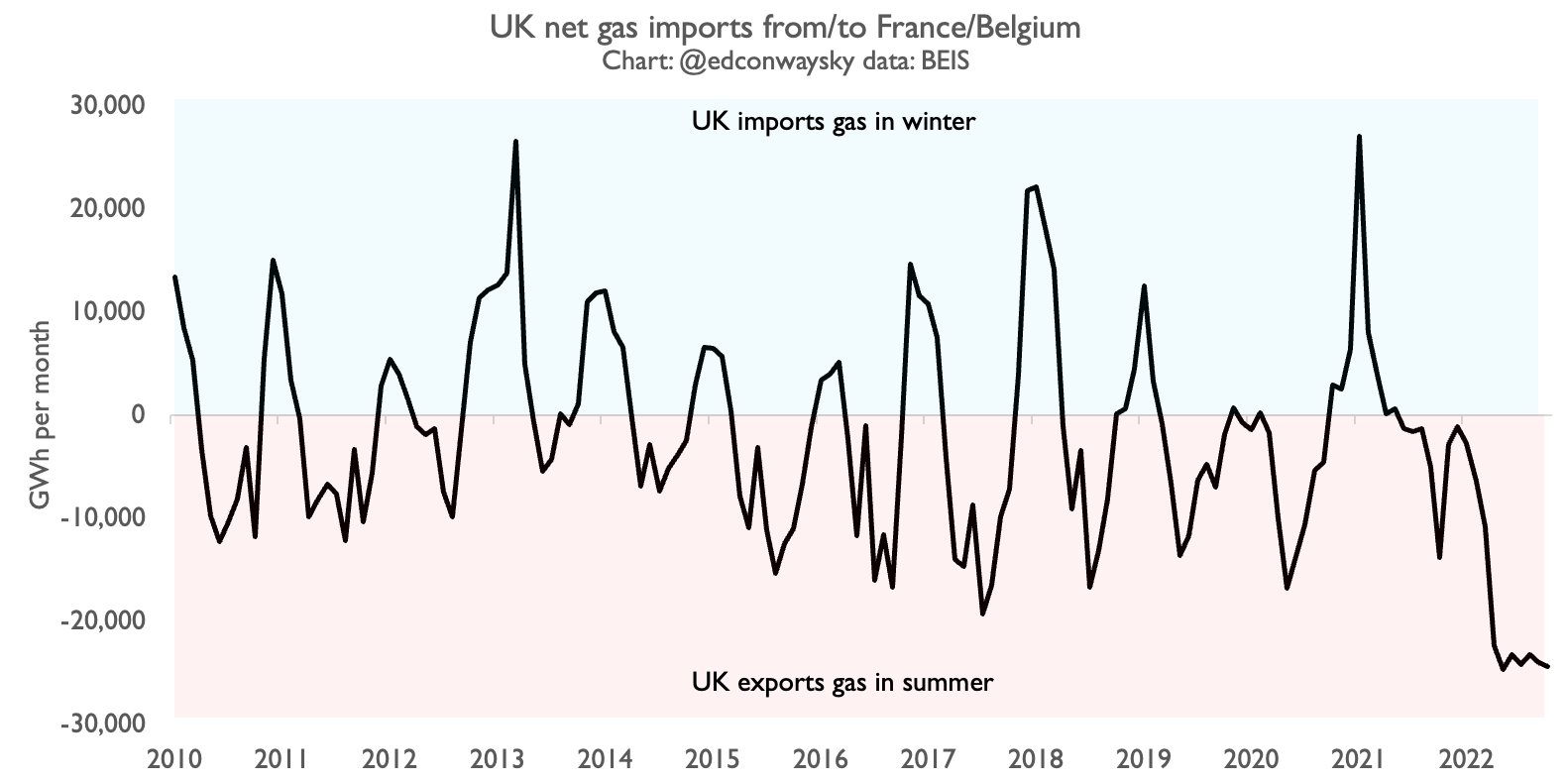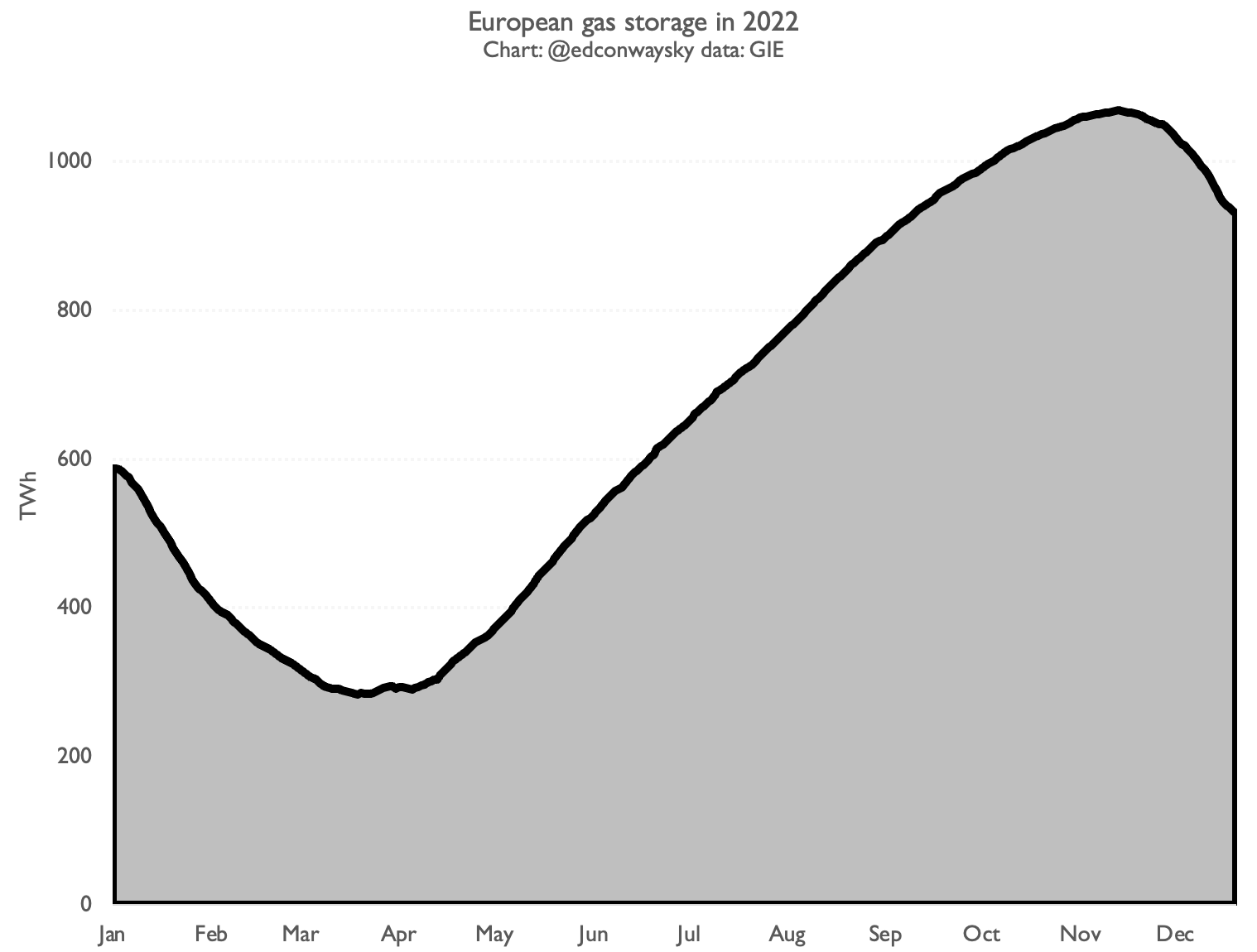The strange tale of the North Sea Link

I honestly had no intention of writing a second consecutive article about an obscure energy link no-one’s ever heard of, but then something happened that drew my attention to the North Sea Link. I promise it’s more interesting than it might at first sound!
The North Sea Link is a cable, or rather a pair of cables, which connects Britain to Norway. Completed last year, this is one of the great recent feats of engineering, running hundreds of miles from Blyth in Northumberland, across the North Sea, over a deep oceanic trench, and through mountains all the way to the Norwegian fjords.

It is the longest subsea power cable and it is supposed to be a vision of the future. The more of these cables we have running around the world, the better able we will all be to run reliable renewable power systems. When the wind isn’t blowing in the UK, Britain can import power from Norway, which has lots of hydropower. By the same token, once it has more offshore wind capacity than it needs (which won't be for quite a while) then on days when the wind is blowing hard, the UK could send that power back up the cable to Norway. They can then use that power to pump water up into their reservoirs, a little like a big water-powered battery.
Squint and imagine a world criss-crossed with these cables and you can see how it might work: cables bringing solar power from Morocco to Europe during the day and from elsewhere in the night. We could replace our national grids with a truly international equivalent, all enabled by armoured copper cables running beneath the seafloor.

Anyway, the reason the Norway link came to my attention was some data released by BEIS this morning. The whole point of the link, in the short run at least, was that the vast majority of the power would be coming from Norway to the UK. Indeed, the early models suggested nearly the entirety of its capacity would be given over to Norwegian hydropower helping supplement the UK grid.
And that’s certainly what happened in the first six months of North Sea Link's life. But then, this autumn, something unusual happened: Britain began exporting power back to Norway. And not just in small quantities; it sent considerably more power to Norway in that quarter than Norway sent our way.

This wasn’t because the UK had more wind power than it knew what to do with, by the way. In that quarter, wind generation was actually very low - about half the “normal” levels you might have expected given the capacity. Most of Britain’s power was coming from its gas-fired power stations. How did it come to this? Norway is arguably Europe’s energy superpower, with all its gas and hydropower, so this was a little bit like exporting oil to Saudi Arabia.*
* Though if you take a step back there’s no escaping the fact that the UK is enormously reliant on Norway for energy. We get around 40 per cent of our gas from there, so the power we were sending back was, arguably, Norwegian energy which we just converted from gas into electrons.
But this strange turn of events was part of a much bigger story. Britain was sending Norway power because it was awash with gas. And it wasn't just being the backup generator to Norway. It was doing something similar for much of the rest of Europe. I touched on this in that last article, but the latest data from BEIS adds further detail. And given how rarely this has been discussed, it’s worth dwelling on the role Britain played in helping Europe to refuel over the past summer.
Consider natural gas itself. Typically, Britain tends to import gas from Europe in the winter and export it to Europe in the summer. Rather than having its own “bank” where it can deposit gas, it simply uses Europe instead, sending it via the pipelines running between the UK and Belgium and the Netherlands. You get a sense of the pattern from this chart:

But this year the process looked very different. Britain started exporting gas in the summer of 2021 and never really stopped. By the middle of 2022 it was exporting enormous amounts across to the continent. Look, this chart shows you the post-2020 trend.

It’s worth underlining a couple of things. The first is that most of this wasn’t UK gas, in other words gas pumped from the North Sea, but gas that was offloaded from Liquefied Natural Gas container ships before being funnelled into Britain’s pipeline network and sent across towards Northern Europe. Britain was a land-bridge. Most of the LNG came from Qatar, but a growing proportion came from US shale and some, too, from Peru. These are the molecules that are currently helping keep Europe warm.
But the second thing to note is just how unusual this is. We have never seen quite such a flow of energy coming from the UK and going across to Europe. Not even when the UK was a big gas producer. That it’s not being pumped out of UK North Sea gas fields isn’t really the point. It’s that the UK’s infrastructure became a critical part of the European effort to refuel while dealing with the hole left by Russian gas.

This is really not trivial. Here’s one way of thinking about it. In a “normal” year the UK sends around 60 TWh of gas across the Channel to Belgium and the Netherlands. In the past year it has sent 195 TWh, so a rough and ready measure of the “extra” gas sent across those pipelines this past year is about 135 TWh. That is equivalent to roughly 12 per cent of all the gas in European storage caverns as of mid-November, when they were at their fullest.

This, though, is probably understating it, since that European total includes the UK, Spain and Portugal, who you shouldn’t really include. Exclude them and Italy, which gets most of its gas from the south rather than the north, and the UK land bridge’s “contribution” (it has to be in inverted commas since there’s no way of tracking the gas molecule by molecule) is around 16 per cent of north European storage reserves. This is the gas powering European industry and keeping homes warm right now!
And as the Norwegian example underlines, providing a land-bridge for gas wasn't Britain's only contribution. The UK also burnt a lot of that gas in its gas-fired power stations and sent it across to France as well as Norway. Again, the scale is totally unprecedented. Britain, which usually receives lots of power from France, exported more across the Channel this year than ever in history. That this happened and went almost completely unremarked is an oddity of 2022.
We heard a lot about France’s woes with its nuclear power stations, many of which were shut down through 2022 due to a host of issues. Much less was said about the fact that in the year to the autumn of 2022, the UK sent more electricity to France than its entire power exports there for the preceding decade.

Now, to some extent all of this is ancient history. Since Q3, when most of the data behind this article covers, things have turned in the opposite direction. The UK is now importing more electricity than it is exporting. It is receiving some gas molecules from Europe. Doubtless there will be plenty of stories bemoaning this reliance on our neighbours in the coming months, so remember the charts here too. These things run both ways.
Anyway, these were just idle thoughts that cropped up after reading BEIS’s latest Energy Trends. It's an extremely underrated publication, by the way, especially in these energy-centric times. For instance, here, to finish with, is something else from the latest edition, a cut-out-and-keep map of where the UK’s major power stations are situated.





Comments ()